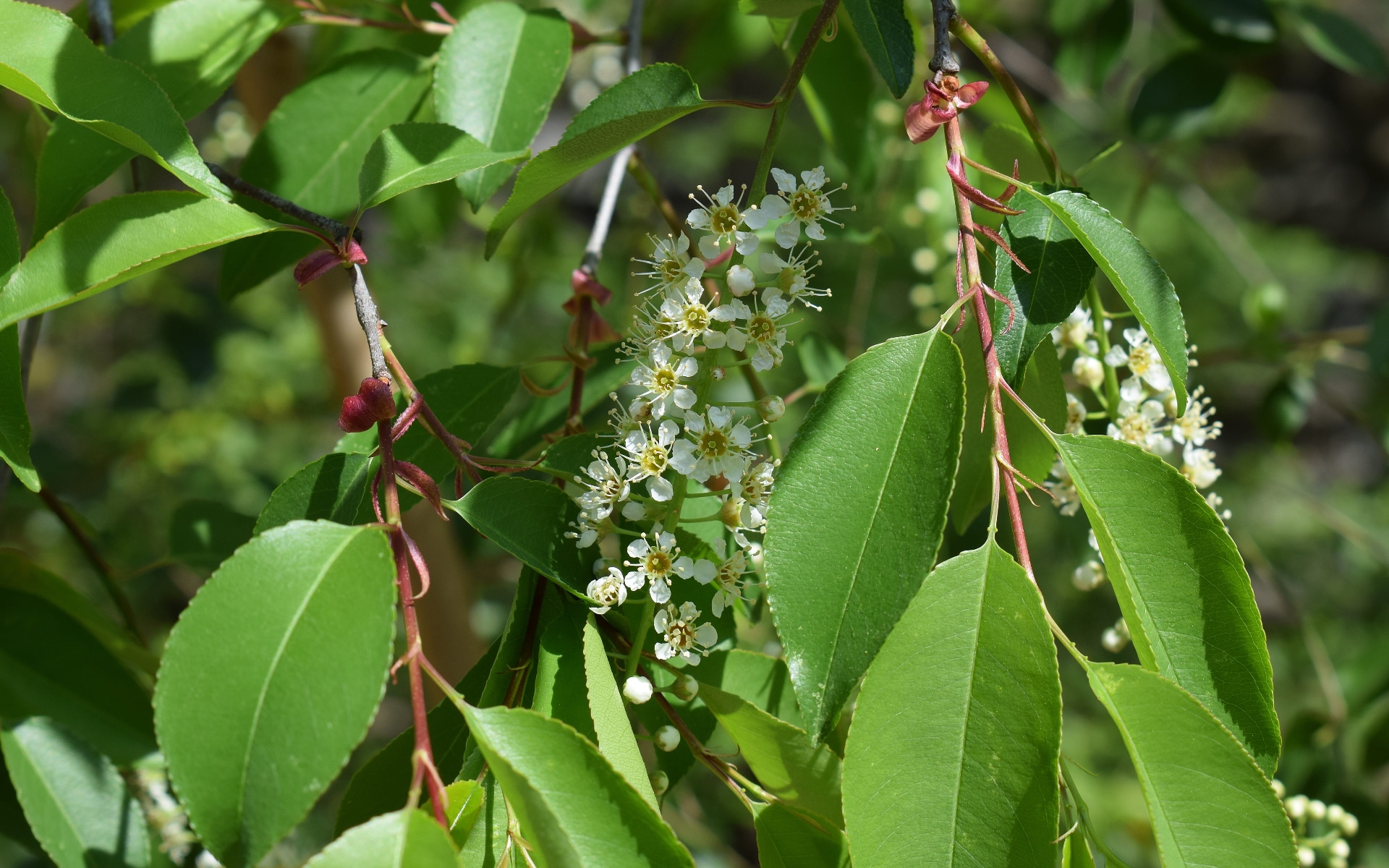If you’re planning to grow chokecherry bush in Colorado, you’ll need to learn a thing or two about this plant before you can grow them. Chokecherries are a relative of ponderosa pine, willow, alder, snowberry, and aspen. You can usually find these large suckering shrubs along mountain canyons and sheltered hill slopes, as well as streambanks, gullies, drainages.
This type of plant looks more like a small tree with oval-shaped leaves is a native to North America, particularly in Canada and most parts of the United States. In Colorado, you can find it in 47 out of the 64 Colorado counties in areas with an elevation of about 4,500 to 10,000 feet. These are usually interspersed with ponderosa pine, juniper, scrub oak, aspens, cottonwoods, and piñon pine.

Chokecherry trees initially bear creamy white blooms that turn into dark red fleshy fruits before they become purple-black that has a pit in the center. Although it’s possible for chokecherries to grow up to 41 feet tall, most of them are only about 12 feet tall.
Can You Eat Chokecherry Fruit?
When eaten raw, chokecherry fruit can taste extremely tart. However, you can use it to make delicious jams, jellies, wines, and syrups. Be sure to avoid eating its fresh seeds or its wilted leaves because these contain cyanide.
What are Chokecherries Good for?
The bark of a chokecherry bush can be used as a flavoring for cough syrups and a cure for diarrhea. When its fruit is added to pemmican, it can be used to cure cold sores and canker sores.
Furthermore, when its leaves and twigs are used to make tea, they’re used to treat rheumatism and colds. Lastly, its wood can also be used to make good bows, arrows, as well as pipe stems.
How Can You Grow Chokecherries from Seed?
First, you need to refrigerate the seeds for three months before you plant them in early spring. Make sure that you use moist, well-drained soil with light, medium, or loamy consistency. You may use land with pH levels that are acid, neutral, or basic.
Chokecherries grow best when they get full sun exposure or dappled shade. When spring season has come, you may plant the seeds at about 1/2-inch deep. If you’re planting them outdoors, be sure to leave enough space for the plant to spread once it matures.
How Long Does It Take for Chokecherry Bush to Grow?
It usually takes up to 18 months for a chokecherry bush to begin to grow and put outshoots. For this reason, you shouldn’t expect to get quick results.
If you plant chokecherry seed outdoors, make sure that the area surrounding the seed is weeded thoroughly. It’s essential to keep the area weed-free, especially within the plant’s first three years of life, because chokecherries find it difficult to survive if they have to compete with the weeds around them.
What Eats Chokecherries?
Colorado black bears love chokecherries. Since they need to consume about 20,000 calories a day in order to reach their ideal denning weight, these bears consume approximately 20 to 30 pounds of chokecherry fruit and acorns on a daily basis. In case you’re wondering, a single pound is made up of about 1,500 chokecherries.
Other animals who like to eat chokecherries include grouse, squirrels, raccoons, wild turkeys, chipmunks, coyotes, deer, foxes, woodpeckers, thrushes, grosbeaks, jays, and robins.
Are Chokecherries Poisonous to Dogs?
Yes, they are. When your dog, or any of your pets, ingest fresh, bruised, wilted, or even dried chokecherry leaves, they could suffer cyanide poisoning. If cyanide poisoning is left untreated within minutes of ingestion, dogs can exhibit clinical signs that include difficulty breathing, dilated pupils, shock, bright red gums, and even death.
Can I Plant Chokecherry Bush in Colorado Greenhouses?
Yes, you can. You may place them in small or medium-sized pots before you transfer them outdoors. Just make sure that the soil is kept moist but never waterlogged.
Planting in a greenhouse is hugely beneficial to you, to your chokecherry bush and your other plants because of the following reasons:
It creates a safe haven for your plants
Whether you’re growing fragile ornamentals or hardy vegetables, a greenhouse is able to provide your plants with the protection that it needs from inclement weather, seasonal pests, and vermin that may attempt to cause damage to them.
It serves as a multipurpose environment
Aside from protecting your plants from external forces, a greenhouse also serves as a multipurpose environment. For instance, you may use it as a storage for your gardening tools, accessories, and equipment.
You’ll get to Save Money on Grocery Bills
Having your own greenhouse provides you with opportunities to grow your own fruits and vegetables. This means more savings on grocery bills and fresh produce all-year-round.
You’ll Gain More Control Over Your Produce
Greenhouse gardening will not only cause you to save money on groceries, but it will also help you maintain a healthier lifestyle because you’ll get to eat homegrown and fresh produce. Since a greenhouse allows you to take control over your plants’ growing environment, you’ll have the option to refrain from using toxic pesticides and other chemicals that may potentially harm your health.
If you think that you’re ready to grow chokecherry bush in Colorado, why don’t you give greenhouse gardening a shot? It’s worth the investment.
